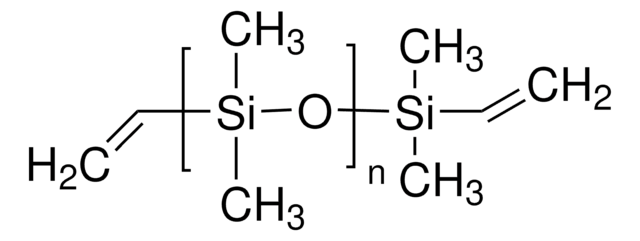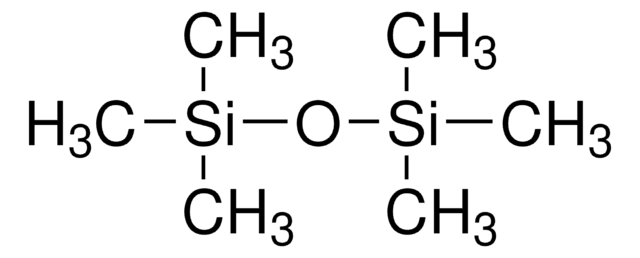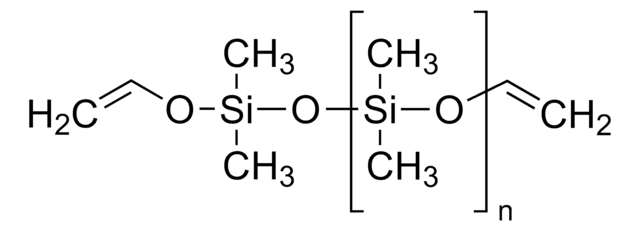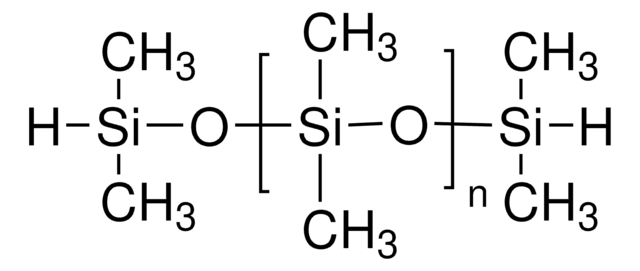469319
Poly(dimethylsiloxane)
viscosity 1.0 cSt (25 °C)
Synonym(s):
Octamethyltrisiloxane
About This Item
Recommended Products
vapor density
>1 (vs air)
Quality Level
refractive index
n20/D 1.384 (lit.)
viscosity
1.0 cSt(25 °C)
bp
153 °C (lit.)
mp
−82 °C (lit.)
density
0.82 g/mL at 25 °C (lit.)
SMILES string
C[Si](C)(C)O[Si](C)(C)O[Si](C)(C)C
InChI
1S/C8H24O2Si3/c1-11(2,3)9-13(7,8)10-12(4,5)6/h1-8H3
InChI key
CXQXSVUQTKDNFP-UHFFFAOYSA-N
Looking for similar products? Visit Product Comparison Guide
General description
Application
Signal Word
Warning
Hazard Statements
Precautionary Statements
Hazard Classifications
Flam. Liq. 3
Storage Class Code
3 - Flammable liquids
WGK
WGK 3
Flash Point(F)
84.2 °F - (External MSDS)
Flash Point(C)
29 °C - (External MSDS)
Personal Protective Equipment
Choose from one of the most recent versions:
Already Own This Product?
Find documentation for the products that you have recently purchased in the Document Library.
Customers Also Viewed
Articles
Dr. Tan and researcher introduce recent trends in Self-healing Soft Electronic Materials and Devices. The emergence of smart, functional SHPs will be highly beneficial to the advancement of the next-generation self-healing soft electronic devices. Autonomously self-healing devices could help to minimize the need for repair or replacement of electronics and machines, potentially reducing the cost of materials and reducing electronic waste.
Advances in the area of soft optoelectronics, with a focus on the development of organic optoelectronic devices on shape memory polymers (SMP) is discussed.
Related Content
We offer PDMS surface modification kit which allows for durable hydrophilization of various polydimethylsiloxane (PDMS) surfaces.
Our team of scientists has experience in all areas of research including Life Science, Material Science, Chemical Synthesis, Chromatography, Analytical and many others.
Contact Technical Service









